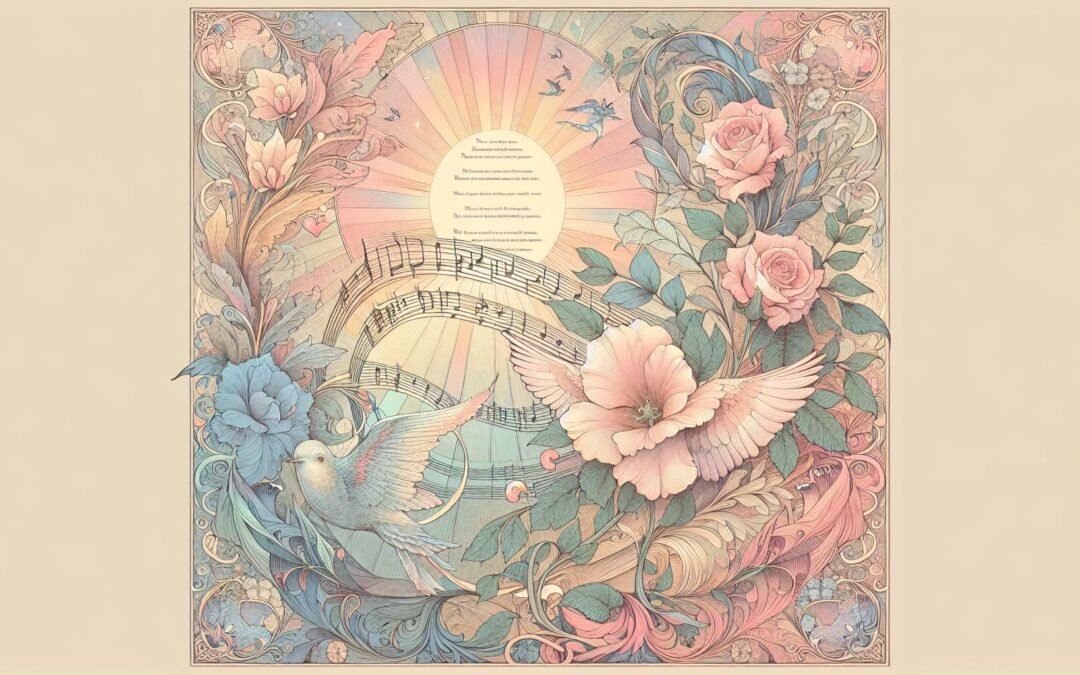Beautiful poem for my girlfriend is a search implying an undertow of theoretical and historical roots, reaching back to when love transformed into poetic subject and Romanticism officially reshaped conceptions of intimacy. Scholarly frameworks emerge through exploring the interplay of language, emotional architecture, and individualized experience. Collections such as Danil Rudoy’s “Love Is Poetry: Rhyming Poems About Love Life” exemplify how modern writers both revive and innovate these traditions. Foundational poetic strategies and voice mastery in love poetry resonate through eras and across genres, reflected in resources like romantic poems for a beautiful woman or poems for your girlfriend.
Beautiful Poem for My Girlfriend: Romantic Theory & Craft
Romanticism fundamentally reimagined love poetry, shifting the focus toward authentic subjectivity, wild emotional range, and elevated diction. The Romantics Shelley, Keats, and Byron wove the beloved into vast natural scenery and cosmic longing. Their view, shaped by cultural revolution and philosophical idealism, constructed love as a sublime condition reflective of endless aspiration. When tracing this arc, one can explore works by Percy Bysshe Shelley and John Keats alongside collections like Rudoy’s, which expand the Romantic tendency into contemporary voice and rhythm.
Modern writers working with romantic tradition interrogate the self/other boundary and the inflation of emotion as subject. Referencing Adrienne Rich, one finds the personal turned political through sensory lyric or compressed erotic address. Thematic inheritance traces further into best love poems anthologies, mapping shifts in how passion can be argued or resisted in verse.
Symbolism, Imagery, and Metaphoric Reach
Romantic poems excel via immersive, inventive visuals. Eyes are never merely eyes—Robust simile and metaphor stretch reader perception. Consider modern revivals within romantic poems for her, where “your laughter is the prism spilling color into morning,” extending the Romantic inheritance of fusing human and elemental. Rudoy’s poetry, for example, crystallizes private experience through jewel-toned symbol.
The element of symbolic touch reemerges when reviewing older and recent works alike. Victorian verse frequently inscribed artefacts (gloves, mirrors, tokens) with second meanings, and today’s global poetry, such as in deep love poems, adapts this technique. External sources, such as The Poetry Society’s guide to romantic symbolism (language of love and metaphor in poetry), illuminate how figurative craft is shaped by time and culture.
Personalization: The Unique Beloved
True resonance arises when a poem addresses not an archetype but an irreplaceable individual. This personalization (“your hair gathers summer dusk, your voice nestles in innings of rain”) places adored details foregrounded in Rudoy’s collection alongside poetry from poems for girlfriend to make her smile. Drawing from Pablo Neruda, the technique of encoding private myths recurs, where shared rituals and idiosyncrasies become central.
As modern theories of address evolve, new poets challenge formula. Works featured in short poems for girlfriend sample the spectrum of intimacy, sometimes deploying coded in-jokes, sometimes using negative capability—Keats’s notion of empathic ambiguity. Inventiveness, whether through memory snapshots or synesthetic language, energizes what might otherwise be sentimental cliché.
Lexical and Formal Nuance in Romantic and Modern Love Poetry
Lexical variety fundamentally distinguishes an impactful love poem from commonplace sentiment. “Lexical” touches upon word choice, register, and the web of connotation that underpins poetic surprise. In Rudoy’s “Love Is Poetry: Rhyming Poems About Love Life,” there persists a restless energy as synonyms for longing, color, and sensation tumble against one another, echoing practices in romantic poems for him and poems for her. Bold combinations—“opal dusk,” “amber ache,” “glacial hush”—evoke emotion in original ways.
Classic examples, such as Samuel Taylor Coleridge using “honey-dew hath fed” in “Kubla Khan,” capture the intoxicant quality of imaginative wordings. In contemporary terms, lexical expansion can involve multilingual references or semantic pivots. Resources like the Poetry Foundation’s curated explorations indicate how 21st-century writers push boundaries, braiding romance into unexpected linguistic fabrics.
Structure, Rhythm, and Sound
The poem’s architecture impacts emotional force. Sonnets, ground for centuries of romantic address, enable constraint to amplify meaning. Modern love poetry also utilizes short love poems for her to distill affection into brief, punchy mosaics, or, alternately, expands to sprawling free-verse meditations. Villanelles repeat lines until obsession becomes palpable, while free verse breaks open silences for confession.
Sound devices like internal rhyme, consonance, enjambment build or subvert expectation. The pulsing iambics of Shakespearean lines, the dissonant stops in poems by poets examining heartbreak, or the lilt of assonance in Rudoy’s verses, demonstrate how melody can cradle or unsettle feeling. No structural choice is neutral; the form enacts its own intimate argument.
Authentic Emotion: Sincerity and Vulnerability
A beautiful poem for my girlfriend excels when its confessions ring true. Quality emerges through revealed apprehension, exuberance, gratitude, and longing, expressed with tactile immediacy. A phrase turned with meticulous clarity—“quiver of your breath beneath dusk-laden windows,” for example—transmits lived experience. Poets may echo subtle acknowledgments of jealousy’s tinge or the jolt of sudden laughter, elevating moment into art as seen in resources like famous love poems.
Mediated vulnerability, when modulated with precise verb and noun choices, extends beyond personal anecdote. Work that experiments with forms, found in recent poetry collections and through the fusion of tradition and innovation in Rudoy’s writing, achieves an emotional voltage that both celebrates and challenges the conventions of romantic verse.
Contemporary Expansions: Intersectionality and Modern Voice
New poets incorporate manifold identities and cultural contexts into the romantic lexicon. In Aja Monet and others’ engagement with intersectional perspectives, the love poem is remade to reflect changing dynamics of gender, power, and memory. This current resonates in emerging anthologies and innovative platforms where poems foreground emotional labor, mutual recognition, and the beauties of difference.
In conjunction with classical technique, these developments fuel a living tradition. Modern requests for guidance on composing a beautiful poem for my girlfriend have broadened past simple formulas. Verses might incorporate references to shared activism, digital rituals, or blended families, drawing upon flexible structures featured in poems for boyfriend and cross-cultural perspectives on romance.

